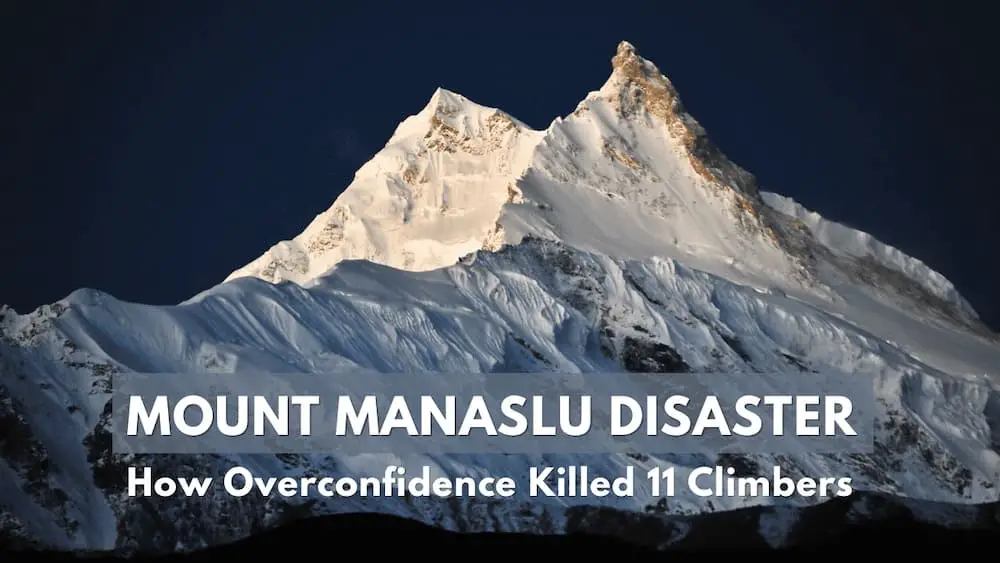A rough peak rises high in the northern Himalayas of Nepal. Mount Manaslu is the eighth-highest peak in the world and rises to an impressive elevation of 8,156 meters. From a distance, the mountain appears to be equally beautiful and terrifying due to its unusually steep slopes and extensive ridges covered in jagged cornices. This terrifying mountain has lived up to its reputation as it has claimed the lives of over 80 people.
Just like the rest of the mountains, people dream to stand on their summit in awe of the world below. However, the mountains don’t always submit to the climbers easily. This blog covers the events of the recent 2022 and 2012 Manaslu avalanche disaster.
The History of Mt Manaslu – First Summit Attempt in the 1950s
Manaslu became fascinated with foreigners in Nepal when British mountaineers first became aware of Manaslu in 1950. After the discovery of the mountain by outsiders expedition teams began devising a plan to climb the mountain. Many teams noted a possible ascent route from the mountain’s northeastern face.
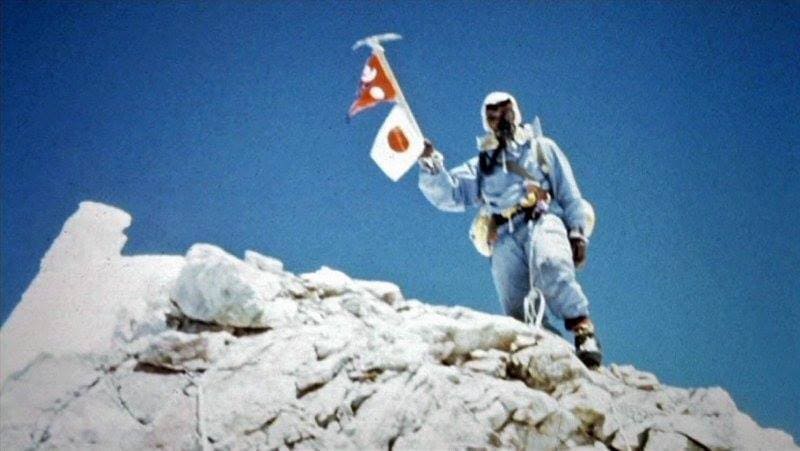
Even though the British didn’t attempt to summit the mountain then, several Japanese expeditions tried to reach the summit. Eventually, Mount Manaslu was conquered by Toshio Iminishi of Japan and Gyaltsen Norbu of Nepal in 1956. Although the mountain was popular at the time, the next successful ascent of Manaslu happened in 1971.
One reason it took so long was because the locals did not view the mountaineers positively at the time. They had gradually grown hostile to climbers during the excursions from 1950 to 1956. Especially after a bad avalanche in 1954 that destroyed a monastery and killed 18 people. Because of this, locals from the area began to think that the climbers had offended the gods.
Despite this, by the 1970s, the locals once again started allowing climbers to the mountain again without further hostilities.
Mount Manaslu: Simple But Dangerous Climb
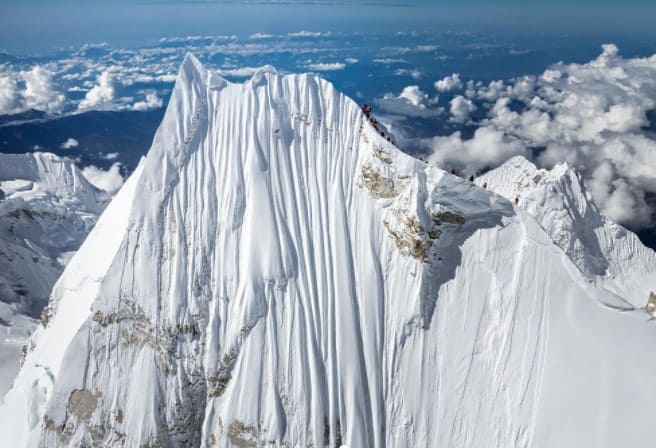
Manaslu is regarded as an easy climb due the absence of the demanding technical expertise, aside from the final push to the summit. Despite this reputation, Manaslu has seen a great deal of fatalities compared to other 8000-meter summits like Cho Oyu. The ascent of the glacier is fraught with massive gaping crevasse fields, a particularly active ice fall between camps 1 and 2, and large ominous serac ringing its top ridges. Moreover, the risk of avalanches on the mountain has also raised concerns about the safety of the mountain.
Along with these risks, climbers who want to reach the summit of Manaslu must be vigilant about the snow conditions to avoid being swept away by a natural disaster. This is because the mountain receives a lot of snow each year and has typically warmer weather than other 8000-meter peaks.
Manaslu Avalanche 2022:
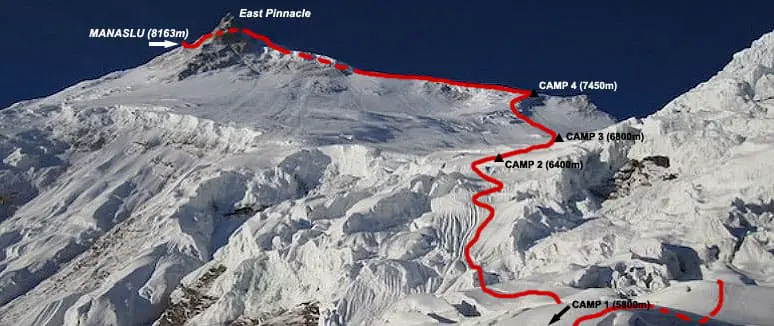
During September and October of 2022, a significant avalanche descended, engulfing numerous tents at the Base Camp and Camp 4 on the mountain. Within a span of six days, climbers bore witness to three fatalities and thirteen injuries, predominantly resulting from avalanches. These avalanches were triggered by an unusually heavy snowfall during August and September, months when climbers typically undertake ascents in the fall.
Traditionally regarded as a training ground for alpinists preparing to conquer peaks like Mount Everest and K2, the peak of Manaslu took on an alarming degree of peril during that autumn. It established itself as one of the most hazardous mountains in the Himalayas.
26 September 2022:
Furtenbach Adventures concluded its expedition following the events of Saturday, September 26. On September 26, an avalanche occurred at an elevation of 24,000 feet. It engulfed a team of climbers and resulted in injuries to over a dozen individuals. Tragically, a Nepali guide, Anup Rai lost his life in the incident. Further up the peak, Hilaree Nelson, a renowned ski mountaineer at the age of 49, met a devastating fate. She succumbed after a fall just below the summit.
According to eyewitness accounts, a minor snow slide dislodged Nelson from the ridge where she was skiing. This causing her to plummet thousands of feet below the mountain. Rescue teams discovered Nelson’s body on Wednesday, September 28.
Furtenbach Adventures was not the sole outfitter to withdraw their expedition following the tragic deaths of Nelson and Rai. The remaining guided expeditions on Manaslu were also cancelled. This decision to depart from the mountain signifies an untimely conclusion to what had been the busiest season ever on the Himalayan peak.
1 October 2022:
On Saturday, October 1, a massive avalanche cascaded down the lower flanks of the 26,781-foot Manaslu, engulfing dozens of tents at the mountain’s Base Camp. Videos capturing the enormity of the slide swiftly circulated online. As the snow clouds dissipated, the extent of the damage became visible: approximately 35 tents were either buried or torn apart. Fortunately, everyone in the camp remained unharmed.
During the later part of that morning, another avalanche occurred at a higher altitude on the mountain, resulting in the tragic loss of Nepali guide Dawa Chhiring Sherpa. Dawa was descending from Camp 2 to Camp 1, situated at 18,700 feet. He had been associated with the outfitter Seven Summit Treks, which promptly announced the termination of their expedition.
In a similar vein, the guiding company Elite Exped, operated by the renowned Nepali climber Nirmal “Nims” Purja, also called off their mission to reach the summit. Over 400 climbers had secured permits to undertake the ascent, with many aiming for the true summit. In previous years, climbers typically turned back at a point situated 20-25 feet lower than a location on a nearby ridge. However, for the year 2022, guides had for the first time installed fixed ropes all the way to the highest point.
Manaslu 2012 Disaster: September 23
Manaslu’s climbing season was in full force in September 2012. Snow fell over several days in 2012, which was not a good start to the climbing season. Although the weather was not favorable at first, a 10-day window appeared around September 15. It prompted the mountaineers to clammer of the mountain for their summit bid.
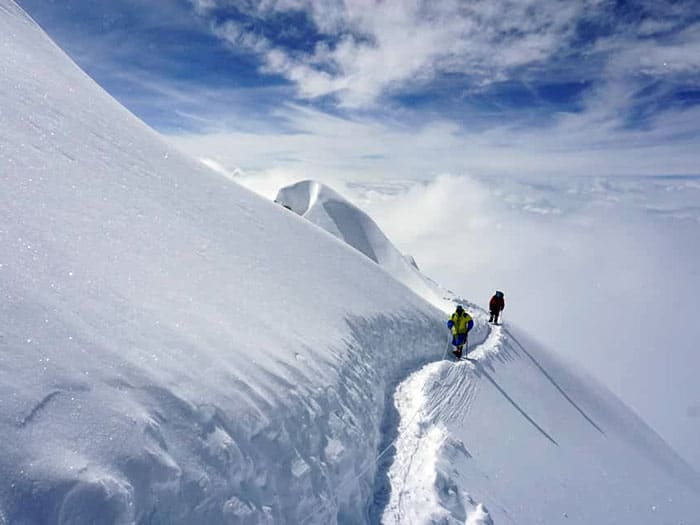
This year, Camp 3 was positioned lower than usual for wind protection from a sizable serac field. The typical Camp 3 site, 100 meters higher, was heavily exposed to strong winds. On September 22, 2012, a severe blizzard blanketed Manaslu, trapping the climbers hoping to reach the summit. Isolated in their tents, they spent the night trying to weather the storm and get some rest before sunrise.
On September 23, around 4:30 a.m., while most climbers on the mountain were sleeping, a massive serac estimated to be about 600 meters wide broke off above camp 3, triggered an avalanche that crashed down the mountain. The 31 individuals at camp 3 were carried away in the avalanche. It tore down the mountain and through the camp, uprooting the tents as it went.

Glen Plake, a professional skier, aiming to reach the top of the mountain without oxygen and ski back down, recounted reading in his tent while Gregory Costa slept next to him in his sleeping bag. Costa was launched from the tent and was never seen again.
After the initial gust of wind from the avalanche blasted the tents and climbers at camp 2, they figured the worst was over. They turned their attention up the mountain to evaluate the disaster’s severity.
Camp 3 Was Swept Away By An Avalanche
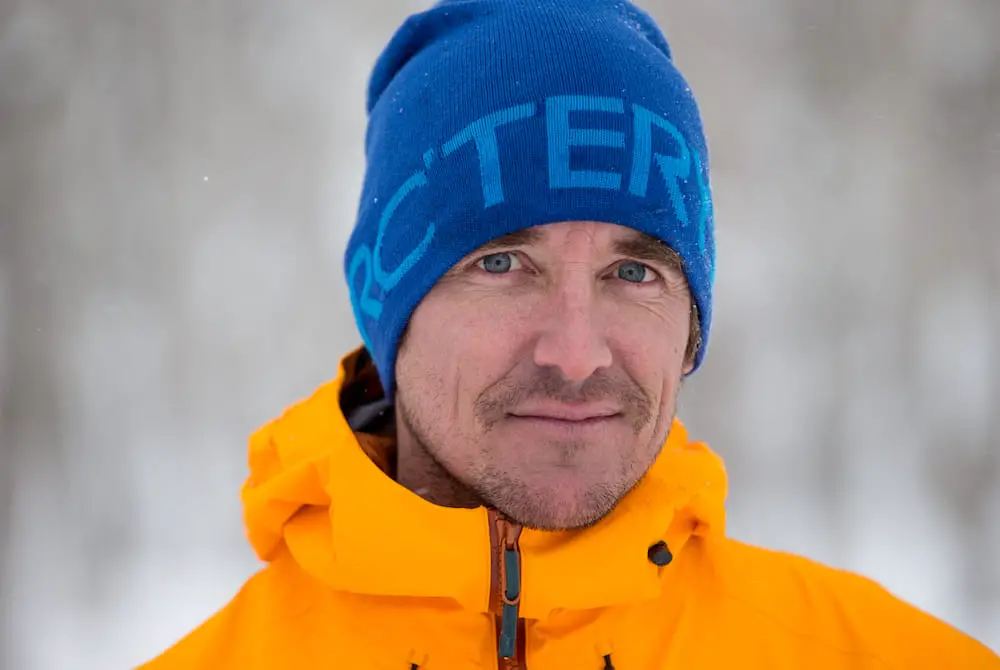
Greg Hill, a Canadian professional skier, recalled seeing headlamps strewn along the mountain above him and initially assumed that the climbers were doing some early-morning acclimatization. However, he soon noticed that Camp 3 was no longer visible and immediately realized that the avalanche had swept the camp and its inhabitants away.
Hill and the other climbers at Camp 2 decided to hurry up the mountain to assist in rescue efforts. By daylight, helicopters had been called, and a thorough search for survivors of the 31 climbers hit by the avalanche began.
8 Climbers Dead, 3 Missing At Manaslu’s Camp 3
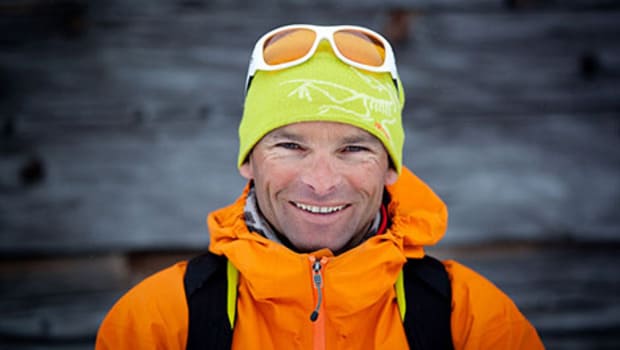
By the end of September 23, 2012, authorities had identified eight people as deceased, while three remained missing. Unfortunately, as the days passed after the catastrophe, it became increasingly clear that the destinies of the three missing individuals had all but been decided. Many of the surviving climbers gave up their push for the summit, while a few persisted and tried to reach the summit of Manaslu.
One of the missing climbers was Remy Lecluse, a Frenchman who served as Glen Plake’s team’s guide. As a somber burial was held for him and several other French climbers back in Chamonix, France, Remy Lecluse’s wife heartbreakingly looked for him on the glacier.
However, a short time later, his body was discovered in a crevasse after being carried there by the avalanche.
Manaslu Avalanche: What Really Happened On 2012?
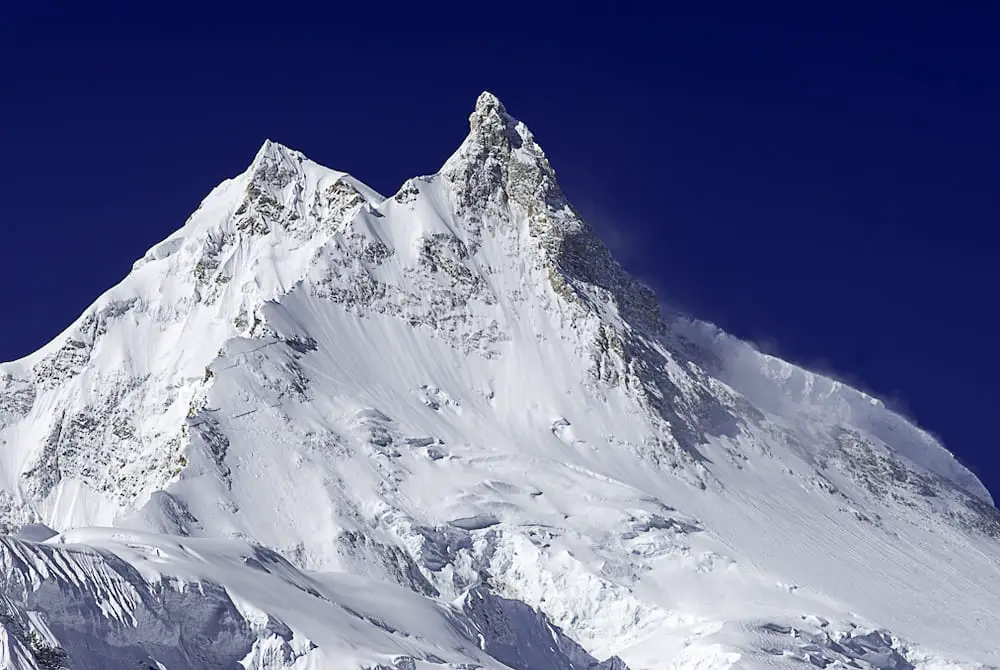
In the end, the tragedy resulted in the deaths of 11 people. Luckily, several small independent teams had abandoned their climbs just days earlier due to concerns about a likely avalanche. Although some climbers were saved thanks to sound thinking, others continued on and put themselves in harm’s way.
Herd mentality played a large role in people dying during the 2012 Manaslu disaster. Even though the warning signs were present, the larger commercially led teams continued to push up the mountain, and the other large commercial groups felt pressured to get their clients to the top of the mountain, foolishly continuing. A similar case reoccured on Oct 14, 2014 where 43 people died on the Annapurna Circuit.
With false confidence pulsating through the groups, many experienced climbers and leaders were making poor decisions. These poor decisions turned into dangerous ones as guides were not clipping in while crossing crevasse fields, resulting in their clients doing the same.
This herd mentality had penetrated the psyche of even some of the most experienced climbers. While extremely unfortunate, the avalanche in 2012 served as a much-needed wake-up call to many of the large commercial expedition companies. The companies were overlooking potential safety concerns and ended up putting people in danger.
FAQs about the Manaslu Avalanche:
This section includes information about some of the most frequently asked questions regarding Manaslu, as well as the Mount Manaslu disaster on September 23, 2012.
Around 4:45 AM on September 23, 2012, Nepal time, 11 people were killed by an avalanche at Camp 3 while sleeping in their tents. The avalanche debris covered a distance of 7,400m to about 6,300m.
An avalanche at 24,000 feet engulfed a group of climbers in the first few days of October 2022, killing a Nepali guide by the name of Anup Rai and wounding more than a dozen others. Ski mountaineering great Hilaree Nelson, 49, passed away higher on the peak after falling just before the summit.
There has been a lot of snowfall on Mount Manaslu. Yukta Gurung, one of the Sherpas in charge of managing the climbing routes, reported that continuous snowfall for 15 days caused the avalanche.
As of December 2022, there have been a total of 89 deaths on Mount Manalsu. The first death was recorded in May 1971, with the last being in October 2022.
Manaslu is a spectacular mountain that rises majestically up in Gorkha, Nepal. Manaslu is referred to as the “Killer Mountain of the World” and is also known as the “mountain of the spirit.” The eighth-highest mountain has seen more than 60 mountaineers lose their lives while climbing it.
